This post contains affiliate links (I get a commission at no extra cost to you for purchases made through links in this post).
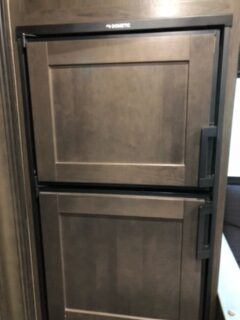

Traveling to new destinations in your RV is a fun experience, but having your food ruined is not. So what temperature should an RV fridge and freezer be?
A motorhome, RV, or caravan refrigerator should remain under five degrees Celsius (41 degrees Fahrenheit). For a freezer, it is best to hover around -18 degrees Celsius (zero degrees Fahrenheit). This will ensure proper food storage and save your food from spoiling.
No one wants their travels interrupted by eating bad food or not having any food due to improper food storage. As you will see, proper food storage in your refrigerator and freezer starts with the perfect temperature.
What Temperature Should My RV Freezer Be?

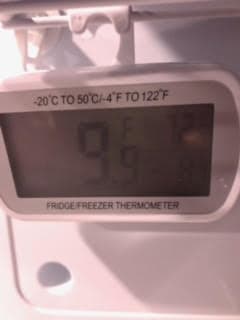
Having your freezer at the perfect temperature will allow you to store food properly for long periods of time. But what is considered the perfect freezer temperature?
You cannot go wrong with -18 degrees Celsius (zero degrees Fahrenheit), as this is ideal for perfect freezing temps. Do not be alarmed if you are off a few degrees, as you can adjust to your liking.
Having your freezer at 18 degrees Celsius is considered the standard for efficiently operating freezers. If it is off by a few degrees, you can safely leave it as is or adjust your temperature settings accordingly.
If you have adjusted your temperature settings and it still has not changed after a while, it might be time to clean your freezer. In addition, you might need to rearrange the items within your fridge.
What is the Coldest Part of an RV Fridge?
Depending on the size of your RV fridge will make a difference in storage. However, they all generally have certain spots that are colder than others.
The coldest part of an RV fridge is the bottom shelves or closest to the middle. The second coldest location would be just underneath the middle or potentially the drawers. Cold air escapes once the door is opened, so storing items near the back wall on lower shelves is ideal for consistent cooling conditions.
Having a plan when storing certain foods can help with efficiency in cooling. This way, you can place the right food in the correct locations.
Where Should I Store Food in My RV Freezer and Fridge?
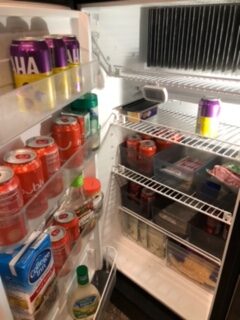

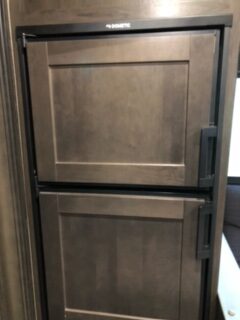
Where to store food in your RV, motorhome, or caravan fridge and freezer is the other aspect of the equation. If you have the desired temperature settings, you need to know what foods are best in specific locations.
- Door – the warmest part of the fridge is the shelves on the door. Consider putting condiments, drinks, or other non-dairy items here.
- Top shelves – the shelves on top are cooler than storing items on the door shelves. These temperatures are more consistent here, but still not the coldest areas of the fridge. Putting food that is ready to eat is a good option here.
- Lower shelves – the coldest part of the fridge will be on the bottom shelves. Try to put eggs, dairy products, and meat here. Make sure the meat is properly wrapped so that it does not bother other foods.
- Drawers – most RV refrigerators have drawers, which sometimes have humidity control options. Either way, this is great for vegetables or fruits and is cold enough to handle most other foods.
- Against the wall – in your freezer, you will likely have limited space and maybe a shelf (for smaller RV refrigerators). But if you store items closest to the back wall, they will be the coldest in the freezer.
As you can see, storing cheese in your fridge door might be convenient to grab for a snack in the short term, but not a great idea long term. Simply moving items to the best locations will preserve food more effectively.
How to Have Optimal Temperatures for Your RV Fridge and Freezer
In addition to storing food on certain levels within the fridge, there are additional steps required in order to have optimal temperatures. In fact, these are typically considered preventative maintenance to make sure your fridge stays running as it should.
Level Your RV
When setting up your rig to sleep overnight, you should always ensure it is as level as possible. One of those reasons to acquire a proper level is that your fridge runs best when it is level. And this is especially important for absorption fridges (propane powered).
While it is best to have it perfect, do not stress if you cannot get the desired level for your rig. If you are off by a degree or two, the fridge will still run properly. Just make sure that you read your owner’s manual for your specific fridge.
Continuous Air Flow From Fridge to Outside
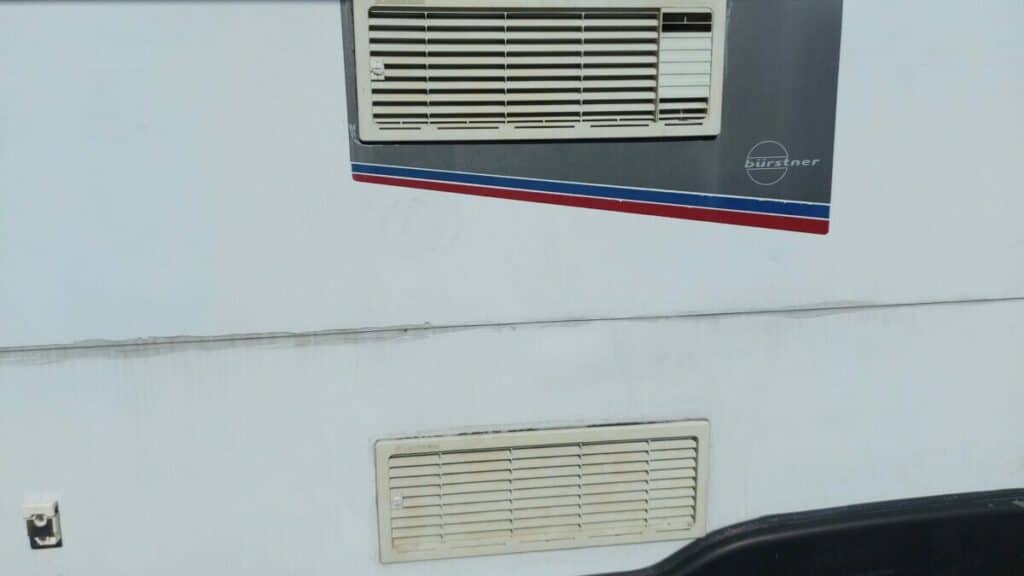
The outside of your rig will have a vent where the fridge is located. This needs to be inspected every so often to ensure that heat can escape from the fridge.
Some have vent fans, while others do not. You could always look to have one installed if you believe it will make your vents work better. Otherwise, check routinely for any blockage.
Time for Fridge to Cool
If you have just recently cleaned your fridge or if you only travel every once in a while, consider plugging in your fridge for at least 24 hours. This will allow plenty of time for your fridge to work and keep a constant temperature.
This also gives you an opportunity to make sure your fridge works properly. If any cooling issues arise when nothing is in it, you can skip a step in pinpointing the issue when it is empty.
Choosing Items Before Opening Door
If you keep up to date on what you have stored in the fridge and have it organized, you should have a good idea of what you want before opening the door. Browsing with the door wide open for too long wastes energy.
Having a good idea of what you want before opening the door is best. Try to limit the amount of time the door is open to achieve the best results.
Parking in Shade
Outside temperatures, especially the heat, can greatly affect how much your fridge runs. If you can park your rig in the shade, specifically the area that has the fridge, this will help tremendously.
If you cannot park in the shade, try extending an awning if you have one. If the fridge happens to be located where an awning would cover and provide shade, this is ideal.
Keeping Adequate Power
Having the right amount of power is important for running your fridge. If you are dry camping or connected to shore power is going to have some differences.
On shore power, you don’t have to worry since you will power your fridge directly on that. But when dry camping, boondocking, or wild camping, make sure you have enough juice to power your fridge, but in that case, you will most likely have a fridge that consumes little electricity, like a compressor fridge and some solar!
If you are using an absorption fridge, one that can also be powered on propane, you will need to run it on propane instead since those fridges consume way too much electricity to be powered from the batteries.
Stocking with Cold Items
When buying groceries, it is best to purchase ones that have already been cooled or in the refrigerated section. Items that need desired refrigeration, such as canned drinks, will take longer to cool if you grab ones that are not cold.
Putting items in the fridge that are already cold will help preserve the temperature within the fridge. You can put items in there that need to get cold, but remember that it will make the fridge work a little harder.
Buy Ice at Pivotal Times
If your RV fridge has an ice maker, it can be helpful on hot days. However, using this feature will make your fridge work harder on those scorching days.
Consider purchasing ice to store within the freezer to help regulate temps and to take a load off of your freezer. If you have extra, you could store it in a cooler.
Use a Cooler for Backup
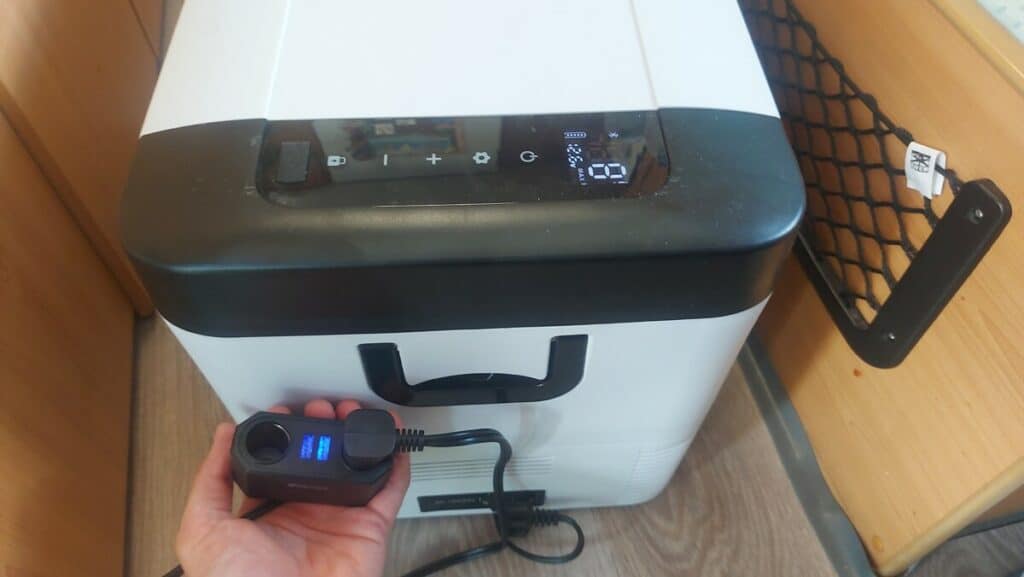
Assuming you have extra ice, you could store it in a cooler. While this will not last forever, you could make some room in the fridge if you have too many items. Or if you have an extra 12-volt compressor cool box that you can keep plugged in, that’s even better.
If you have a family function that needs a lot of food cooked or found some items that you bought in bulk, a cooler can help store items temporarily until you have the room in your fridge. Overstocking your fridge will prevent it from cooling properly.
Continuously Monitor Temps
If you want to check out how cool your fridge and freezer are, I personally use this thermometer to measure the temperature. It is great since it comes in a two-pack, allowing you to check both your fridge and freezer’s temperatures at the same time.
By measuring the temperature, you can see in real-time how efficiently your fridge is operating. It also allows you to adjust to a colder temperature if desired.
Make Sure Leftovers are Cooled Before Storing
Storing leftovers is crucial to saving food and money. But storing them too soon after cooking can make your fridge work harder.
After cooking, allow your food to cool down to mildly warm temperatures before storing it. This allows the fridge to work normally versus trying to cool down hot foods.
Clean the Fridge Regularly
Checking for ice buildup in the freezer and deep cleaning the fridge is great preventative maintenance. The cooling coils within the fridge need to freely radiate cooler temperatures.
If ice begins building up in the fridge, you have a slight problem. Simply defrost the fridge and reevaluate your cool conditions.
Checking the Seals on the Door
The seals around the border or the door need to be inspected if you are having issues holding a consistent temperature in your fridge and freezer. Air leaks will greatly mess with efficiency in cooling, causing your fridge to work much harder than it needs to.
Excess ice can build up near the seal that is damaged or leak the air. Replacing the seals will be a cheap fix if that is indeed the issue.
Signs You Need to Adjust Your RV Fridge
A few signs tell you you have issues with your fridge or freezer cooling. These include water dripping within the fridge and too much ice accumulating on the wall in the freezer.
Inside the fridge in some RVs, you have cooling coils. If these accumulate too much water, you may need to make the fridge cooler.
If the freezer has too much ice building along the back wall, you might need to make the freezer warmer by a handful of degrees. Your best bet is to use a thermometer to measure the temperature ranges and to accurately calculate what setting works for you.
How to Adjust Your RV Temperature Settings
The temperature control will be within the fridge or freezer itself. In some RV refrigerators, the control is on the outside.
These typically have numbers ranging from one to five. One is the lowest setting, while five is the coldest setting.
On average, the best setting is either a three or a four. It will be up to how you use the fridge and what you store within it to reach desired settings.
If you have your thermometer handy, try playing with different settings. For 24 hours, check the temperature on setting three and then try again on setting four. If needed, you can up to the final setting to see if that is what you need.
Tips for Cooling Your RV Fridge Faster
If you need to cool down your RV fridge in a pinch, there are some things you could do if you do not have a lot of time. While it is not ideal to do these every time you need your refrigerator to operate, these could save time when traveling long distances or powering back on for the first time after not in use.
Ice it Down
Using ice, as mentioned above, could help cool down your fridge and freezer much quicker. When doing this, you bring the cooler air temperatures to the limited area within the fridge or freezer.
This should help cool refrigerators to a manageable temperature within three to four hours. So while you may not have the best temperature to keep a stocked fridge, you saved a handful of hours to get where you are in this scenario.
Use Propane to Cool
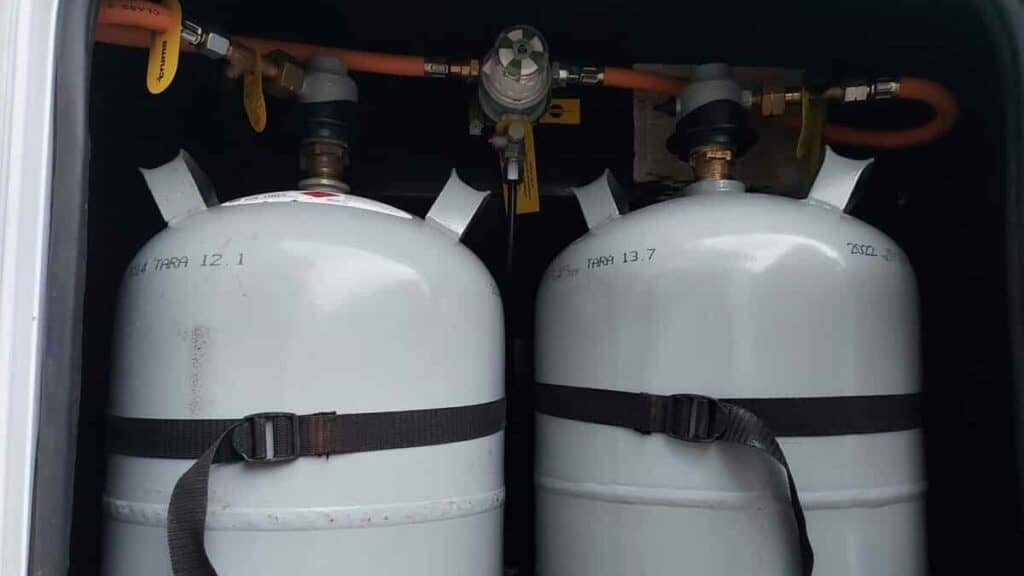
If your refrigerator can use propane to cool, which most RV’s nowadays have that capability, this is best to cool the quickest. Propane heats much quicker in the evaporation process to help carry out proper cooling functions within a fridge.
